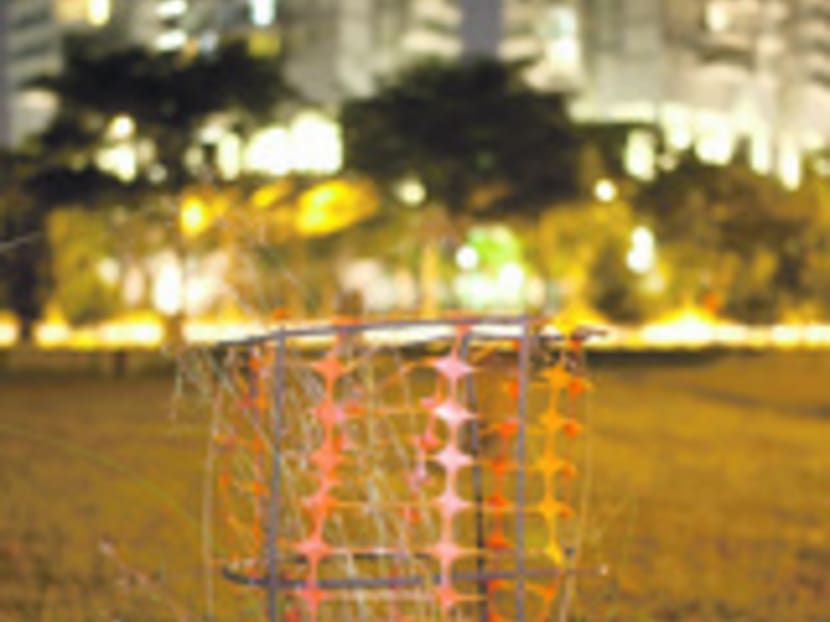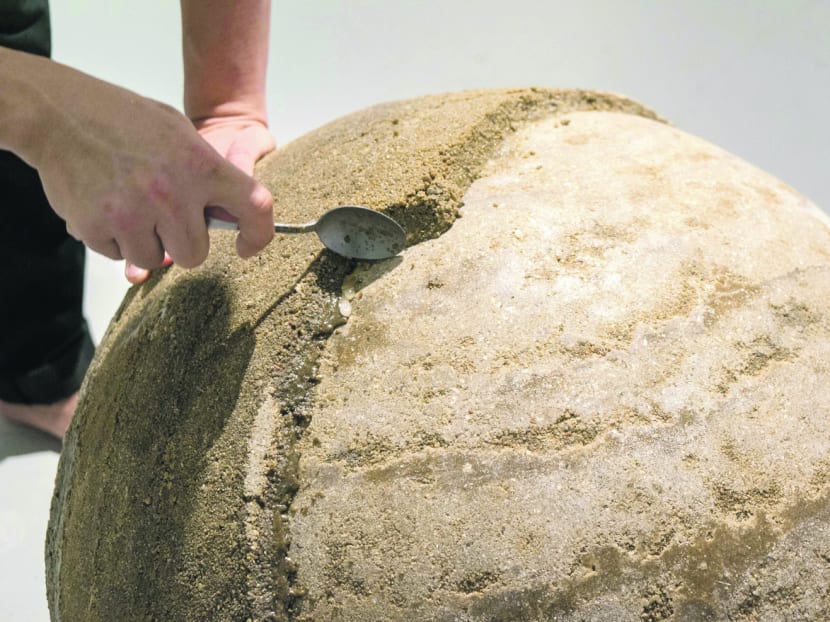Art review: Still We Walk On Fences | Weight/less
SINGAPORE — If there is one constant to life in Singapore, it is how there always seems to be physical changes to its landscape as new buildings emerge and old ones are torn down. Two new shows at the Institute of Contemporary Arts Singapore, though markedly different at first glance, offer unique perspectives on this ever-present constant.


SINGAPORE — If there is one constant to life in Singapore, it is how there always seems to be physical changes to its landscape as new buildings emerge and old ones are torn down. Two new shows at the Institute of Contemporary Arts Singapore, though markedly different at first glance, offer unique perspectives on this ever-present constant.
The term “photography exhibition” tends to suggest orderly ranks of images resting quietly on white walls, so it is refreshing to see this stereotype overturned somewhat in Geraldine Kang’s Still We Walk On Fences (a title that would not sound out of place on a post-rock album). The most conspicuous departure from the norm in her exhibition is This Way Forward, wherein a large sheet of corrugated metal (typically used as roofing or fencing material) covers much of the gallery’s floor, thus making the title quite explicitly literal — if only because viewing the show obliges you to walk on, if not an actual fence, the stuff of which fences are made.
The way the work flexes noisily underfoot — presenting the possibility of tripping and falling — underscores the idea that the images of humdrum walls, fences and other barriers, are not just aesthetic configurations pleasing to the eye. The exhibition as a whole resembles a kind of extract, or abstract, of the breakneck pace of construction that informs our urban environment. Ours is a city in a state of becoming; the fence, so to speak, delineates Singapore-that-was with Singapore-that-will-be, notions which have been the subject of exhaustive speculation this year.
Meanwhile, Lee Pheng Guan’s exhibition Weight/less bears little resemblance to Still We Walk On Fences. However, it is also concerned with the in-between, the fulcrum which joins and divides two opposing notions. In the case of Lee’s exhibition, the subject at hand is weightedness and weightlessness. In particular, the seemingly paradoxical notion of attempting to attain weightlessness through sheer weightedness. It is a conundrum that calls to mind the apparently impenetrable nature of Zen koans — or, more prosaically, stack overflows in computer software and recent scientific experiments with temperatures somehow below absolute zero.
Fittingly enough, Lee’s exploration of these metaphysical — even mystical — matters is given form through the use of materials which abound in raw, physical presence: Stone, concrete, metal, sand and so on. Although typically not imposing in terms of raw size, the stark materiality of his work has its own sort of presence, like stumbling upon the remains of modernist triumphal architecture a thousand years hence.
This sense of time, and its accumulation, is exemplified in one work in particular. It is titled Sisyphus (At Rest), after the Greek myth of king Sisyphus, who was condemned to spend the afterlife rolling a massive boulder up a hill, only to watch in desperation as it rolls back down at the end of the day. It is an ironic punishment of exhaustion and futility.
The work itself is a sphere, not of rock, but sand bound with wax, with an apparent tendency to shed — suggesting, in conjunction with the title, that the countless centuries of Sisyphus’ labours have turned his burden fragile, signifying either liberation and rest, or an additional layer of futility. However, given the tangled web of Greek mythology, still more interpretations may be possible.
As a whole, Weight/less evokes a sense of accumulated time and matter, akin to encountering modernist monuments a thousand years hence, time-worn but all the weightier for it — a directionless accumulation that reflects, perhaps, anxieties concerning the pace and extent of urban development in Singapore in parallel with Kang’s own exploration of the boundaries which inscribed this shifting urban landscape. Bruce Quek
Still We Walk on Fences and Weight/less both run until July 26 at Institute of Contemporary Arts Singapore, 1 McNally Street. Free admission.





